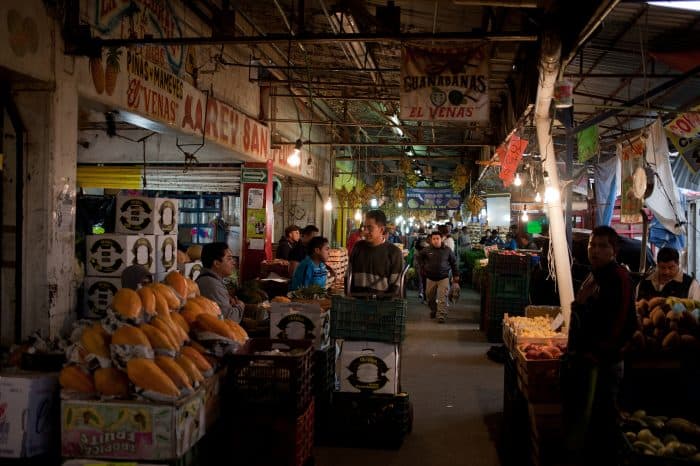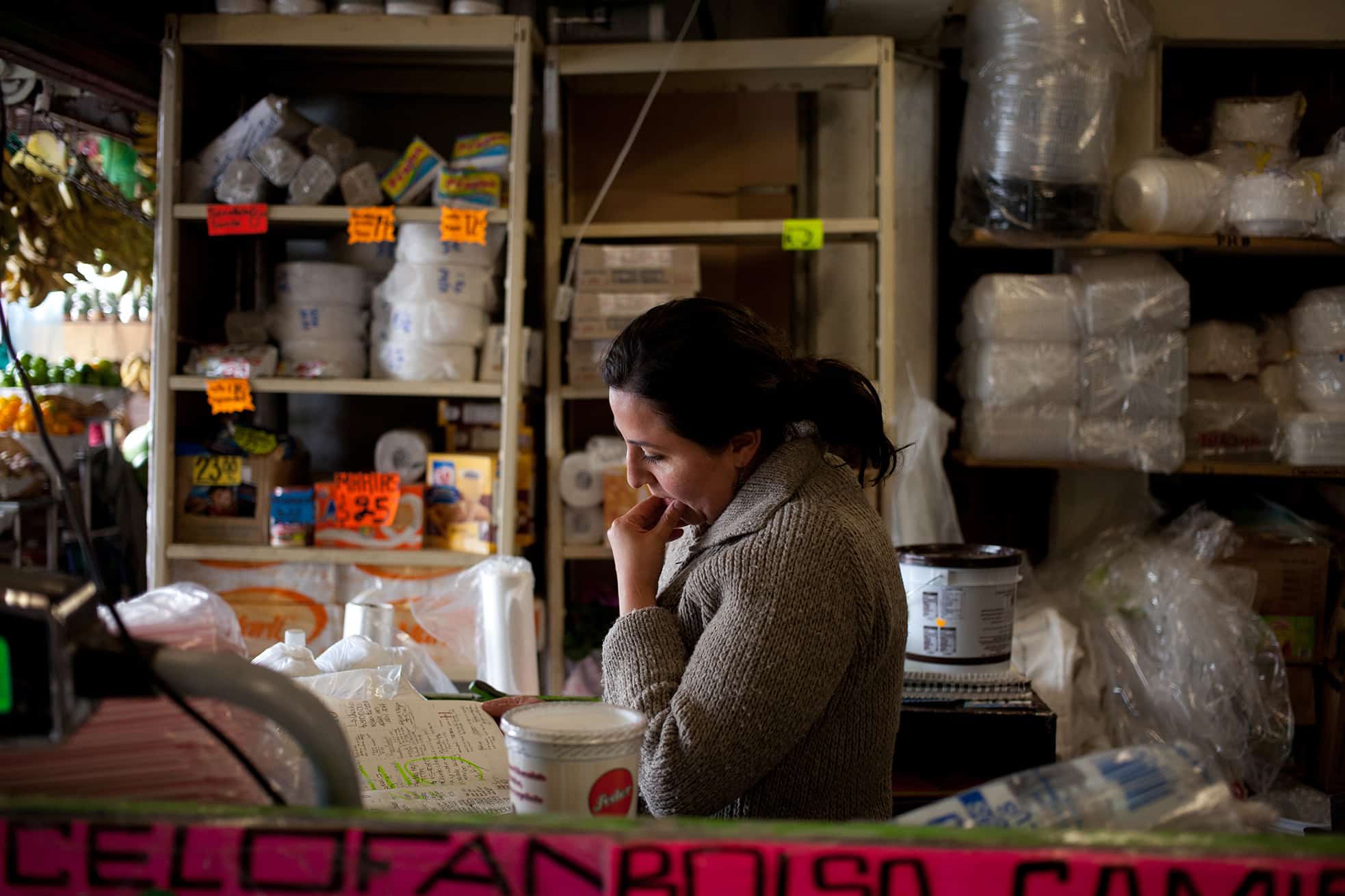ECATEPEC, Mexico — The first time, after the men with police badges had lashed Adriana Carrillo’s wrists and ankles with tape, and she had spent 37 hours in the back of a Nissan, her father tossed the $12,000 ransom in a black satchel over a graffiti-strewn brick wall and brought her nightmare to its conclusion. She took three days off and then went back to work.
“I don’t want to live as a victim,” she said.
Carrillo returned to the cash register of the family store, where she had worked since she was 8 with her parents and six sisters, amid the floor-to-ceiling jumble of marshmallows and mixed nuts and pinwheel pasta and Styrofoam cups. Their business — cash-based, working class, on the outskirts of Mexico City — happened to put them squarely into the demographic most vulnerable to Mexico’s kidnapping epidemic. And on May 28, 2013, less than two years later, a white sedan pulled up alongside Carrillo’s car as she drove home late from the market. When she saw the guns she covered her face with her hands.
“No, not again, no,” she remembered saying. “No. No. No. No.”
In Mexico, with its history of drug-war violence and corrupt police, kidnapping is an old story. In the past, the crime tended to target the rich. Now it has become more egalitarian. Victims these days are often shopkeepers, taxi drivers, service employees, parking attendants and taco vendors who often work in cash or in Mexico’s “informal” economy. Targets also tend to be young — students, with parents willing to pay ransoms, are commonly targeted.
“The phenomenon has changed. Now it’s the workers, the people in the informal economy, because they are the ones who have access to money quickly,” said Isabel Miranda de Wallace, an anti-kidnapping activist in Mexico. “We have never seen as many kidnappings as we are seeing now.”
Last year, Mexico officially recorded 1,698 kidnappings, the highest number on record. Yet government officials concede that only a small percentage of victims — 1 in 10 by some estimates — report the crime, as police are sometimes involved in kidnappings and not trusted. The statistics kept by Miranda’s organization, Association to Stop Kidnapping (Asociacion Alto al Secuestro), recorded 3,038 kidnappings last year. Another, led by Fernando Ruíz Canales, a former kidnapping victim who now helps negotiate for the release of hostages, puts last year’s kidnapping total at 27,740, or 76 per day.
Halfway through the year, official statistics claim kidnappings have dropped by 17 percent, to 808 in the first six months of 2014. Miranda’s organization reports an increase of 56 percent in the same period.
The kidnapping problem, even as murders and other crimes have tapered off, has intensified the pressure on Mexican leaders to find solutions. Earlier this year, President Enrique Peña Nieto announced a new anti-kidnapping strategy to better coordinate state and federal law enforcement efforts. He also created the position of kidnapping czar, given to former prosecutor Renato Sales Heredia.
Sales argued that the spike in kidnapping is an unintended byproduct of law enforcement success. Because the government has killed and captured drug cartel bosses, he said, narco-henchmen have been forced to diversify into other money-making ventures, such as kidnapping and extortion. The Mexican police, both active and retired, also play an important role in kidnapping gangs, either carrying out abductions themselves or protecting those who do, according to officials and experts.
“There is an important number of kidnappings that are fundamentally linked to ex-police,” Sales said in an interview.
The three men who told Adriana Carrillo to step out of the car during the first abduction were carrying police badges, she said. It was 8 a.m. on June 2, 2011, and she was about to drive to the market to work. They ordered her at gunpoint into the back of their tan Nissan X-Trail and told her to keep her head down.
Carrillo said she didn’t recognize them, but they must have been familiar with the family business. The market in Ecatepec — a sprawling open-air plaza of 700 shops and nearly 10,000 employees — was like a second home. Her father, José de Jesús Carrillo Ríos, had opened his stall in 1990, and the small business had given the family a bright-yellow two-story house with potted plants on the balcony and paid for Adriana’s university courses in political science.
As the nation’s largest supply center, which covers nearly 600 acres in Mexico City, there are as many as half a million visitors on a given day. The crowds and the large quantities of cash changing hands has made such markets a target for kidnappers.
Last year, the number of kidnappings of people who work at the main Mexico City market rose 30 percent, to 38 people, according to a trade organization of supply centers in Mexico. Market officials dispute those figures and say they have not had kidnappings inside the market, although they couldn’t speak to crimes outside. But protecting the commerce there is an obvious challenge: Security guards monitor surveillance cameras on dozens of flat screens in a new command center. Police recorded 198 robberies there last year.

Two terrifying incidents
When Carrillo was kidnapped the first time, she was taken about 10 minutes from her home. The kidnappers kept her bound and blindfolded in the back seat of the car overnight. Her legs cramped. She begged to go to the bathroom.
“They were treating me like a dog,” she said. “It was humiliating.”
The kidnappers, negotiating directly with her father, demanded $300,000, a sum the family could not afford. In many cases, kidnappers accept far less. During his time as a ransom negotiator, Fernando Ruíz Canales, of the human rights group, has seen cases in which kidnappers have held people hostage for a couple of hundred dollars, or a grocery list of fruits and vegetables, or a new refrigerator or microwave.
Sometimes kidnappers have sent severed fingers as warnings or raped and beaten their hostages. By some estimates, 20 percent of kidnapping victims do not survive.
“I thought they were going to kill her,” José Carrillo, her father, said. “One doesn’t know what to do in that moment. I didn’t have that much. My worry was to find money.”
Over several calls, José Carrillo managed to persuade the kidnappers to take $12,000 — a large chunk of his savings. He followed the instructions to throw the bag of money over a white-washed brick wall next to a cracked-concrete basketball court in a park near their house. Within two days, his daughter was free.
The episode had terrified Carrillo, but afterward she felt that things could have been worse. Apart from the first moment when the kidnappers banged on her car window and screamed at her, they didn’t try to hurt her and focused on the money.
The second time she was kidnapped, two years later, she was not so lucky. The two kidnappers drove down major highways and across railroad tracks and canals to what she believed was an apartment building in an industrial neighborhood closer to Mexico City. She was kept in a room with a black curtain over the window.
The kidnappers were far more aggressive, often drunk and high, and they beat her and threatened to murder her. They stole her car. They sent audio recordings to the family of Adriana crying and begging for help. On the phone with her father, the caller was loud and threatening and demanded $1 million.
The Carrillos didn’t trust the police, particularly after the first kidnapping, but both times they felt a responsibility to report the crime.
“This is an obligation of the state, to give us security,” José Carrillo said. “But if I don’t cooperate with the authorities, how can I demand a better situation?”
The second time, the government assigned a negotiator to talk with the kidnappers and over the course of the week agreed on a price of $21,000. After José Carrillo delivered the cash, the kidnappers demanded more, and he came back with another $3,000.
After nine days as a prisoner, exhausted, dirty, sick to her stomach, in borrowed clothes and with $4 the kidnappers had given her for taxi fare, Adriana Carrillo was let loose on the sidewalk near a Mormon church. She was crying when she asked a shopkeeper to borrow a phone to call her father.
After it was over, Carrillo refused to leave the house for a month. When she ventured out, she wouldn’t go alone. She varied the time she left for work and the route she traveled. She gave up jewelry and watches and the basic trust she once felt toward strangers. “I was an idealist,” she said. “I thought all people were good, at first.”
Carrillo and her family have considered moving to the United States, where they have relatives. But for now, she just wants to live as if nobody is chasing her.
“I don’t want to keep these things in my heart, this rancor,” she said. “I know it could hurt me.”
© 2014, The Washington Post








